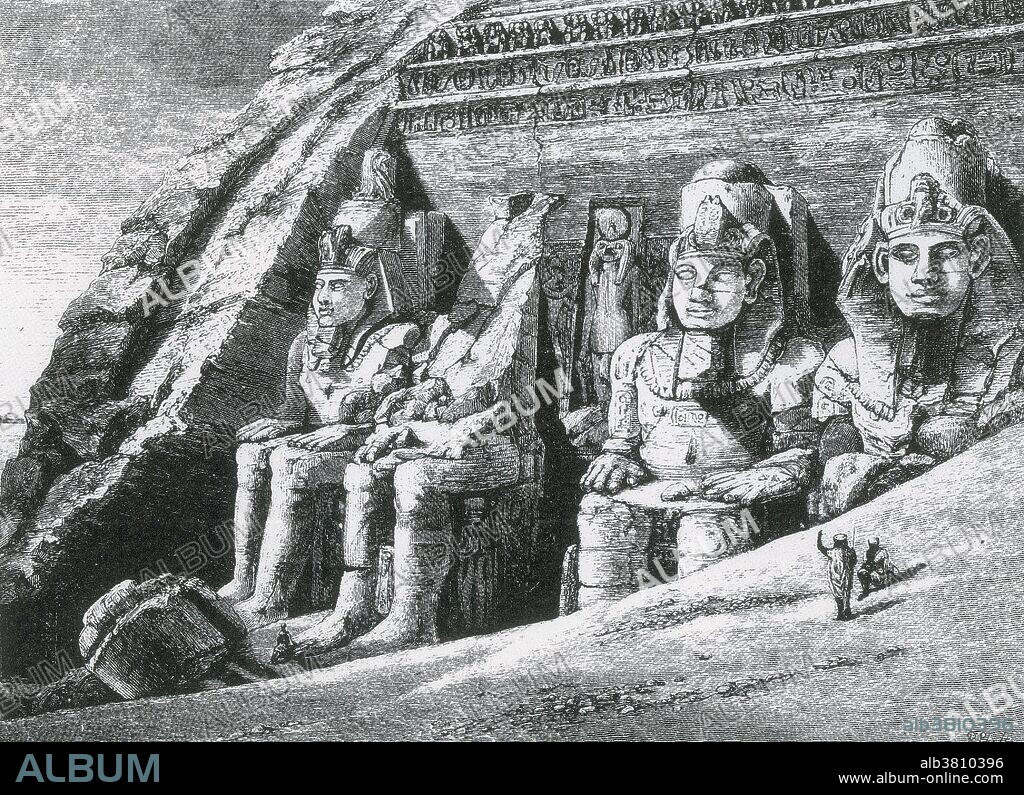alb3810396
Abu Simbel, Nubian Monuments

|
Zu einem anderen Lightbox hinzufügen |
|
Zu einem anderen Lightbox hinzufügen |



Haben Sie bereits ein Konto? Anmelden
Sie haben kein Konto? Registrieren
Dieses Bild kaufen.
Nutzung auswählen:

Titel:
Abu Simbel, Nubian Monuments
Untertitel:
Siehe automatische Übersetzung
The colossal monuments at Abu Simbel on the Nile, from Amelia Edwards' book entitled: A Thousand Miles Up the Nile (1876). The Abu Simbel temples are two massive rock temples in Nubia, southern Egypt. The complex is part of the UNESCO World Heritage Site known as the Nubian Monuments, which run from Abu Simbel downriver to Philae (near Aswan). The twin temples were originally carved out of the mountainside during the reign of Pharaoh Ramesses II in the 13th century BC, as a lasting monument to himself and his queen Nefertari, to commemorate his alleged victory at the Battle of Kadesh, and to intimidate his Nubian neighbors. The complex was relocated in its entirety in 1968, on an artificial hill made from a domed structure, high above the Aswan High Dam reservoir. The relocation of the temples was necessary to avoid their being submerged during the creation of Lake Nasser. Legend has it that Abu Simbel was a young local boy who guided archeologists to the site of the buried temple which he had seen from time to time in the shifting sands. Eventually, they named the complex after him.
Bildnachweis:
Album / Science Source / New York Public Library
Freigaben (Releases):
Model: Nein - Eigentum: Nein
Rechtefragen?
Rechtefragen?
Bildgröße:
4200 x 3045 px | 36.6 MB
Druckgröße:
35.6 x 25.8 cm | 14.0 x 10.2 in (300 dpi)
Schlüsselwörter:
ARCHAEOLOGIE • ARCHÄOLOGIE • ARCHÄOLOLGIE • BERÜHMT • BERÜHMTE PERSÖNLICHKEIT • ILLUSTRATION • ILLUSTRATIONS • KOENIG • KÖNIG • NOTABEL • PROMINENZ • RUINE • RUINEN • UNESCO • ZERFALL
 Pinterest
Pinterest Twitter
Twitter Facebook
Facebook Link kopieren
Link kopieren Email
Email
